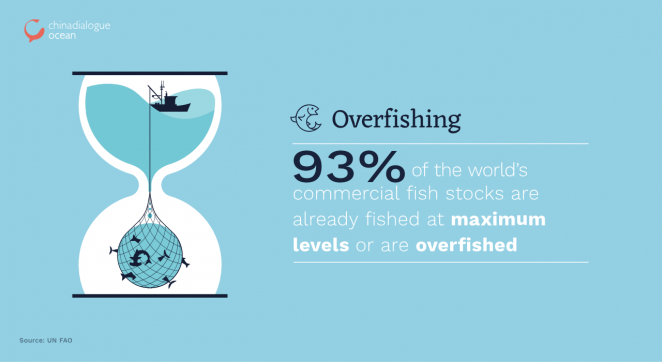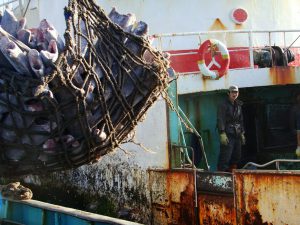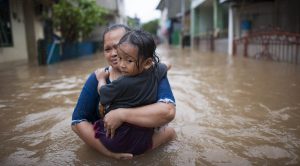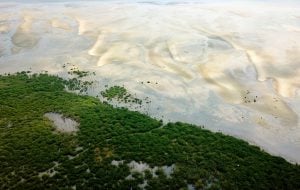“Our house is on fire,” said Swedish activist Greta Thunberg at the beginning of 2019. Her statement resonated throughout the year, with temperature records broken in many countries, an unusually intense wildfire season in the Amazon, and the ocean continuing to lose oxygen.
Millions took to the streets to vent their feelings at governments for not doing enough. In December, protesters inside the COP25 UN climate change conference in Madrid summed up a year of growing boldness, and frustration.
While society and many sectors of the economy will continue to take their own action to help protect the environment in 2020, there is still time to accelerate last year’s slow progress in the international arena, at landmark global summits on the oceans, biodiversity and climate change.
The global ocean
In June, a UN “high-level meeting” will be held in Lisbon, Portugal to advance the implementation of Sustainable Development Goal (SDG) number 14 on life below water.
There is a total of 17 SDGS, designed to eradicate poverty, protect the planet and ensure prosperity.
Agreed by UN member countries in 2015, each objective has specific targets attached to it. Some of the SDG 14 targets are supposed to be met in 2020. These include putting an end to unsustainable fishing of all kinds; prohibiting fishing subsidies that encourage overfishing; and conserving at least 10% of coastal and marine areas.
“Several of the goals are far from being met,” said Loreley Picourt, director of politics and international affairs at the Ocean and Climate Platform. “In addition to evaluating them, we will begin to discuss the next ones by 2020. But we must see what is the point of doing it if many were not fulfilled.”

This second set of “high-level talks”, over which Portugal and Kenya will preside, will seek to elicit voluntary commitments to support SDG 14.
The ocean will also feature strongly in November’s COP26 climate conference. Despite it coming up well short, COP25’s final decision text did highlight the link between climate and ocean and agreed to begin a dialogue on the matter, starting with a meeting in June.
Countries are also expected to include specific mentions of the ocean in their new contributions to fighting the climate crisis, to be presented prior to COP26. Some, such as the South Pacific island nation of Tuvalu, have already taken the lead here.
“The COP26 presidency mentioned that it wants the oceans to remain on the agenda, suggesting that discussions on the links between the climate and ocean will continue,” said Rémi Parmentier, coordinator of Because the Ocean, an initiative joined by 30 countries to incorporate the ocean in climate change policy.
Overfishing
The World Trade Organisation (WTO) will hold its annual meeting in Kazakhstan in June. Among its various objectives will be the elimination of harmful fishing subsidies. The issue has been under discussion for more than two decades, but progress has been sorely lacking.
SDG 14, which will be the focus of the oceans conference in Portugal, includes among its goals the elimination of fisheries subsidies by 2020. The subsidies granted to the fishing industry amount to approximately US$35 billion annually, according to the Fisheries Committee of the European Parliament.

Fishing subsidies distort world fish markets and hit fish populations. But developing countries want to protect subsidies, which they say support low-income fishers.
Around 60% of the world’s studied fish are fully exploited and 30% are overexploited, according to the SOFIA 2016 report, published by the UN’s Food and Agriculture Organization.
“The WTO negotiations on subsidies have advanced too slowly and the WTO knows that. Action at the highest political level is needed. It is no longer enough to leave the discussions in the hands of technical negotiators,” Parmentier said.
Biodiversity
In October, Kunming in southwestern China will host the 15th COP to the Convention on Biological Diversity (CBD), a crucial meeting to establish a new plan for biodiversity protection.
The conference has been called the “Paris Summit for biodiversity”, hoping to match the 2015 meeting that resulted in a global pact to tackle climate change.
In 2010, the 194 countries that form the CBD approved the Strategic Plan for Biological Diversity 2011-2020. Talks in Aichi, Japan, delivered 20 general objectives, known as the Aichi targets, to end biodiversity loss and restore ecosystems.
But most goals have not been met. China’s stewardship of the talks will look to preserve the Aichi targets as a minimum basis, and add new elements to ensure compliance.
“Biodiversity is experiencing a decline unprecedented in the history of mankind,” said Obdulio Menghi, a biologist and president of the Argentine Biodiversity Foundation. “It’s not just species of animals and plants, all ecosystems are being affected.”
Global populations of fish, birds, mammals, amphibians and reptiles decreased an average 60% between 1970 and 2014, the most recent year for which data is available, according to the WWF Living Planet Index. The decrease affects nature’s function to provide the world with fresh air, drinking water and other vital services.
There are five driving forces behind the decline in biodiversity, according to a major UN report published last year: changes in land and sea use; the direct exploitation of organisms; climate change; pollution; and invasive species.
“A transformative change is needed, according to IPBES. We cannot continue with the current production and consumption system. It is an emergency situation,” said Ana Di Pangracio, deputy executive director of the Argentine Environment and Natural Resources Foundation (FARN).
Climate change
In November, the city of Glasgow in Scotland will host the 26th Conference of the Parties (COP26) on climate change. It faces huge challenges in resolving everything left over from previous years and spurring countries to be more ambitious in their efforts.
COP25 was meant to advance key points for the implementation of the Paris Agreement, such as the creation of an international carbon market and securing financing from developed countries to developing countries. However, it was a resounding failure with progress made only on a gender action plan.
“COP had clear mandates in Madrid but unfortunately it did not fulfil them. This year the original objective was to focus on achieving greater ambition. But now we will continue to drag out outstanding issues,” says Enrique Maurtua Konstantinidis, senior climate policy advisor for FARN.
Diplomats and other observers suggest the UK get to work on building support for the negotiations immediately, going from capital to capital as the French did in advance of the Paris summit. This could help generate preliminary agreements and create a more congenial environment in 2020 than the zero-sum game the talks have become.
Through the 2015 Paris Agreement, countries committed to limit global warming to 2C compared to pre-industrial levels. However, based on national contributions (known as NDCs) already submitted, the world is heading for rises of between 3 and 4C.
This year, countries are expected to update their NDCs, which should accelerate emissions reductions. However, only 80 countries representing 10% of global emissions have presented improvement plans.
The original version of this article was published on our sister site Dialogo Chino.









![Phuentsholing Gas Station in Bhutan. Petrol stations create problems of emissions in a country too dependent on cars [image by: Omair Ahmad]](https://dialogue.earth/content/uploads/2020/01/Phuentsholing-Gas-Station-300x225.jpg)